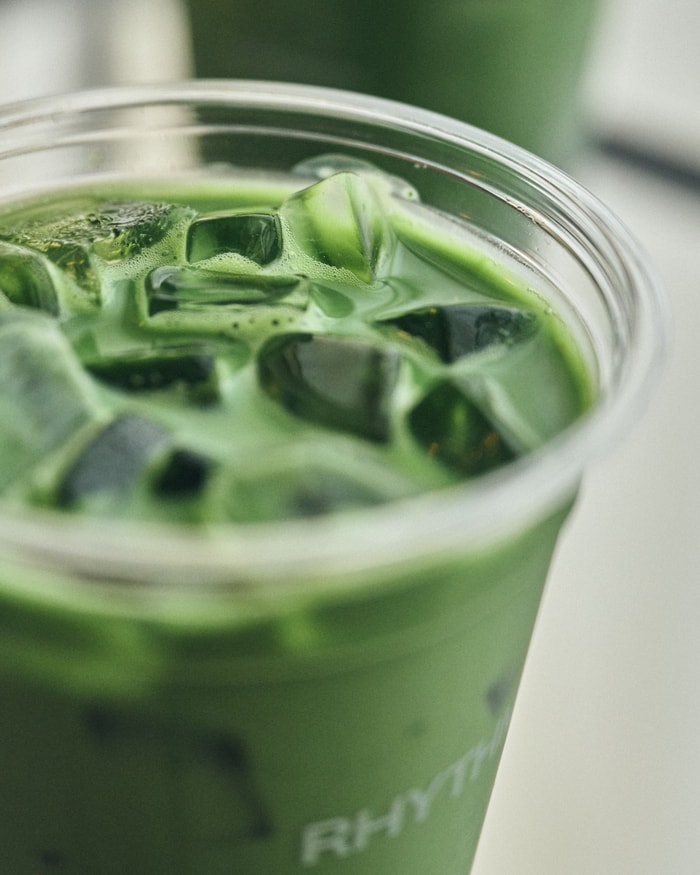
Matcha: The Green Tsunami
Ride into the wave of the newest go-to coffee alternative, matcha. Explore its origins, cultural significance, recent notoriety, and eco-packaging options for brands and establishments alike.
By noissue — 10 October, 2025
How an ancient tea became the symbol of modern wellness, design, and connection.
What Is Matcha?
At its simplest, matcha is powdered green tea, but its story is far richer. True matcha is made from shade-grown tea leaves (tencha), steamed, dried, and stone-milled into a fine, jade-green powder. Because you consume the whole leaf, matcha delivers a smooth, slow caffeine release and a concentrated dose of antioxidants and amino acids like L-theanine, known for creating calm focus without the coffee jitters.
In traditional Japanese tea practice (chanoyu), matcha is whisked into hot water and savored mindfully. It’s not just a drink, it’s a meditation in a bowl, an aesthetic experience grounded in ritual, patience, and respect.
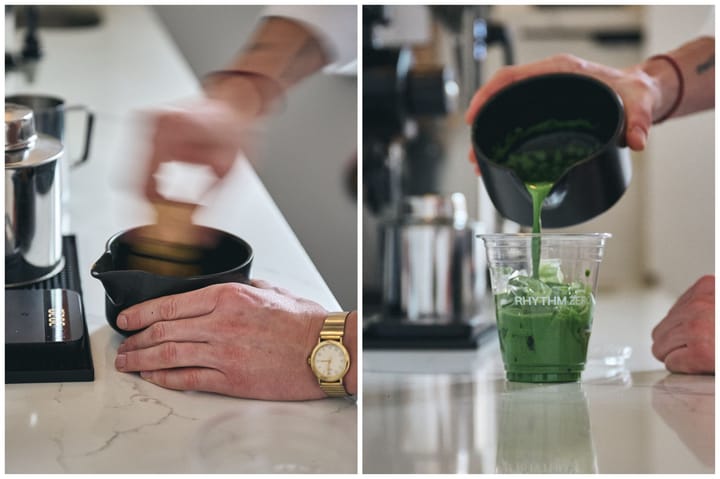
Roots and Rituals
Matcha’s origins trace back to 12th-century Japan, when Zen Buddhist monks imported powdered tea practices from China. The tea master Sen no Rikyū later refined these into the codified Japanese tea ceremony, a quiet act of connection guided by wabi-sabi, the beauty of simplicity and imperfection.
Historically reserved for monks and the aristocracy, matcha eventually spread through Kyoto’s tea-growing regions, becoming synonymous with craftsmanship and mindfulness. That reverence for process and presentation still defines matcha’s soul, even as its global expression evolves.
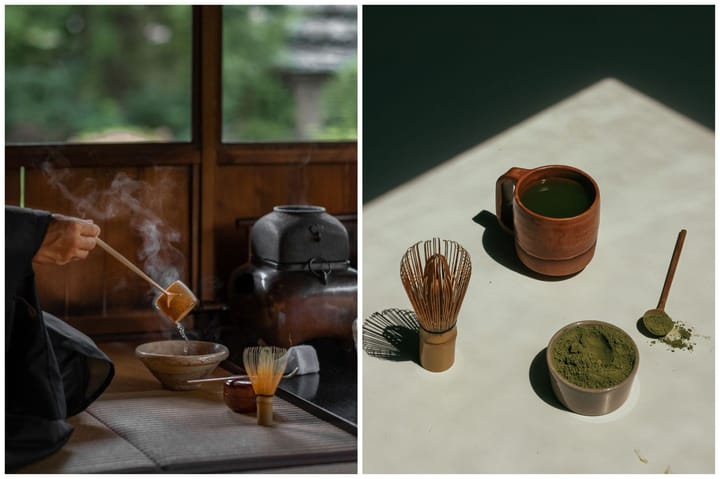
The Modern Boom
Fast-forward to today, and matcha has gone from temple to TikTok. Its rise reflects a convergence of global wellness trends, design culture, and social media aesthetics.
- Health & function: Consumers seeking a “cleaner” caffeine fix are swapping espresso shots for matcha lattes, drawn by its balance of calm energy and nutritional appeal.
- Instagrammability: The luminous green foam of a matcha latte is instantly recognizable, photogenic proof of a mindful lifestyle.
- Cultural curiosity: As Japanese food, fashion, and minimalism influence global design, matcha has become an emblem of that aesthetic crossover.
- Ritual revival: In an anxious, always-on world, matcha’s deliberate preparation offers a small, daily act of care.
Matcha is no longer just a drink. It’s a ritual redesigned for the modern rhythm of life.
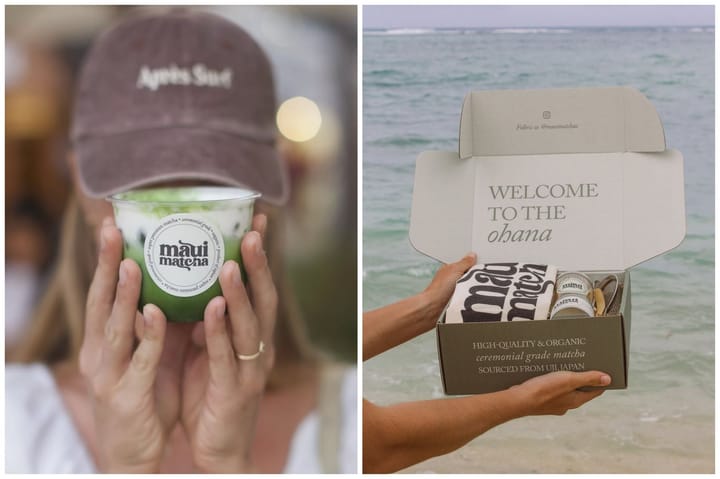
The New Wave: Matcha Meets Modern Café Culture
The new matcha movement has been embraced by creatives, wellness seekers, and the style-savvy. Millennials and Gen Z drinkers see it not only as a healthier option, but as a cultural marker, a beverage that mirrors their values of sustainability, aesthetics, and authenticity.
Celebrities like Dua Lipa and Bella Hadid have helped give matcha pop-culture shine, while cafés and boutique brands have turned it into a lifestyle experience. This intersection of wellness and design, and its visual dominance on platforms like Instagram, explains why matcha’s popularity feels more like a movement than a passing trend.
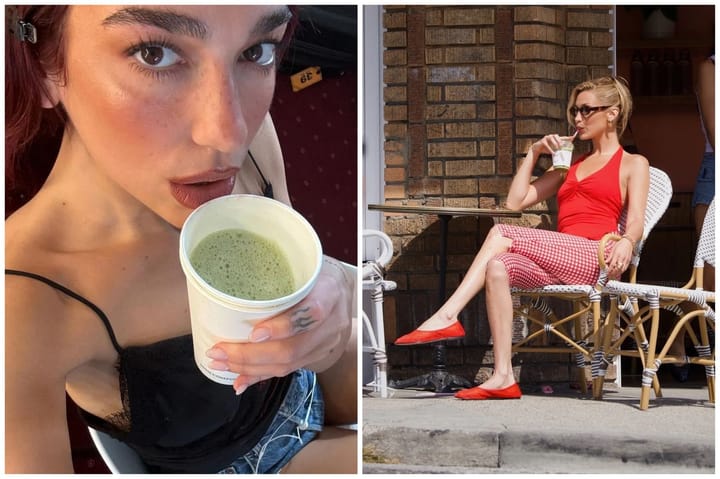
If the traditional tea ceremony was about stillness, today’s matcha moment is about connection. New-generation cafés are reshaping how and where we drink it, blurring the line between ritual and culture.
Berlin-born LAP Coffee (Life Among People) is a perfect case study. Founded on the belief that coffee culture should bring people together, LAP’s spaces are calm, minimal, and deeply human. Their mantra, Life Among People, captures a shift from caffeine as fuel to caffeine as community.
What truly sets LAP apart is how disruptively accessible it is. Where most design-led cafés are positioned as luxury experiences, LAP has flipped that model. Their drinks are deliberately affordable and fast, offering high-quality coffee and matcha to anyone who wants it, without the premium price tag. The brand’s grab-and-go concept combines convenience with culture. Customers can pre-order their drinks through a digital platform, skip the queue, and still feel part of something stylish and intentional.
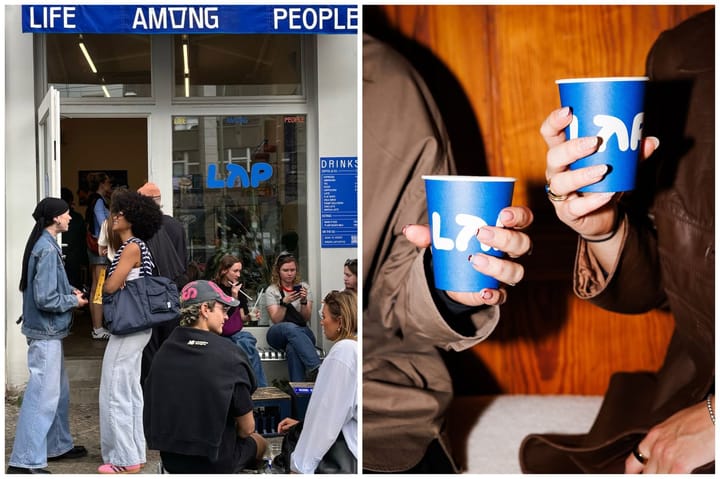

This seamless blend of technology and taste makes LAP feel modern, cool, and effortlessly functional. It appeals to a generation that values both speed and story. It’s café culture designed for urban life, where you can enjoy a ceremonial-grade matcha latte between meetings or during your morning commute, without losing the sense of care that defines the ritual.
By offering both matcha and coffee with equal respect, and by pairing affordability with minimalist design, LAP reflects the beverage culture of a new generation: intentional, inclusive, and future-facing. Here, matcha isn’t just consumed, it’s experienced, democratized, digitized, and beautifully designed.
The Power and Poetry of the Matcha Tin
In the matcha world, the tin itself is a design icon. Traditionally, Japanese natsume and chaki tea caddies were handcrafted and lacquered, treasured as much as the tea they held. That reverence lives on, but in modern form.
Today’s matcha tins balance nostalgia and modernism: brushed metal, soft-matte pastels, debossed logos, and minimalist typography that whisper luxury and craft. These vessels protect delicate powder from light and air, but they also carry story and emotion, acting as miniature billboards of brand identity.
Some collectors treat matcha tins like design keepsakes, lined up on kitchen shelves or café counters as expressions of taste. They have become symbols of continuity, connecting the old rituals of Japan with the new rituals of wellness culture. In a way, each tin encapsulates the essence of the matcha movement itself: mindful, tactile, and timeless.
Inspired by this enduring design language, we’ve introduced our own Custom Matcha Tins — sustainable, beautifully crafted, and made to bring that same sense of ritual and refinement to modern brands.

Collaborations That Shape Culture
As matcha seeps into fashion and design, cross-category collaborations have become part of its global story.
1. sacai × Rocky’s Matcha
The Japanese fashion label and LA-based matcha brand created a hybrid experience that merged couture and café culture. The collaboration included co-branded apparel and limited pop-ups in Tokyo and Los Angeles, presenting matcha as an extension of fashion’s sensory world.
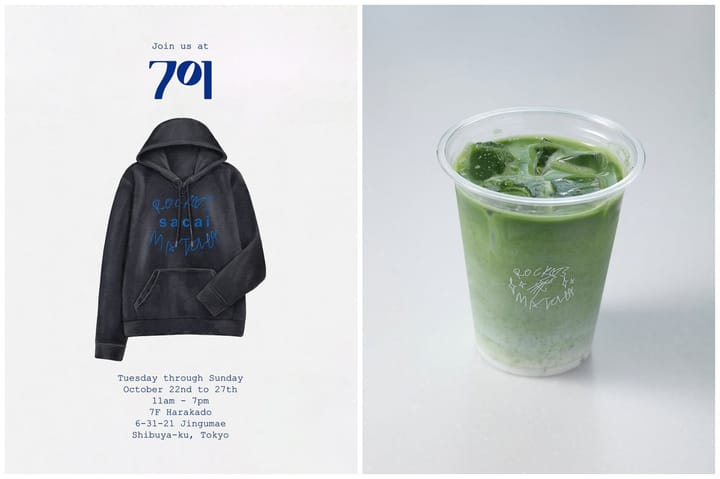
2. Cha Cha Matcha × Virgil Abloh
A pioneering partnership that blended Off-White’s streetwear aesthetic with Cha Cha Matcha’s pastel, pop sensibility. The collaboration produced custom packaging, limited-edition merchandise, and events that reimagined the matcha café as a fashion-forward cultural space.
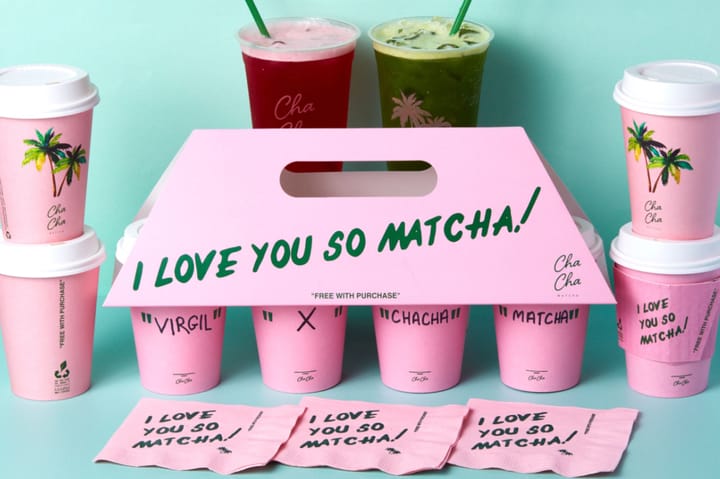
3. Loewe × On Running
The Spanish luxury house and Swiss performance brand incorporated matcha into their joint activation events, serving it at launch experiences designed to celebrate movement, mindfulness, and design. The use of matcha as part of the environment, rather than merchandise, underscored its role as a symbol of calm energy and aesthetic refinement.
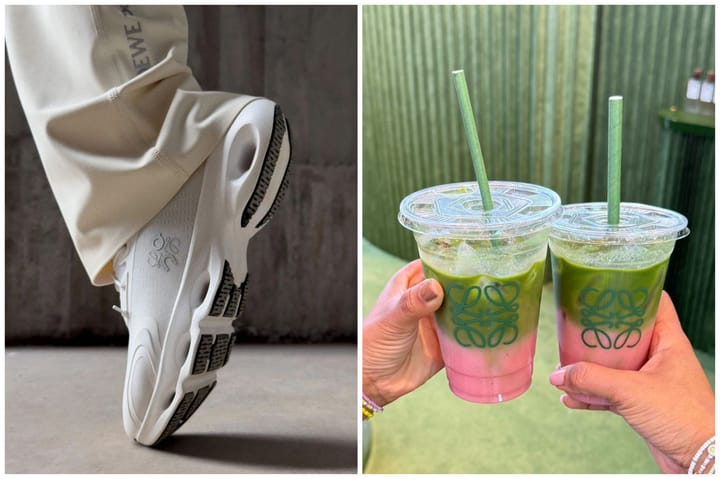
These collaborations show how matcha has become more than a beverage. It is a cultural connector, capable of bridging wellness, fashion, design, and performance through shared values of creativity and community.
Design, Branding & the Future of Matcha

For brands, matcha’s success lies in translation, turning centuries-old ritual into contemporary relevance. The difference between commodity and cult favorite often comes down to storytelling, design, and packaging.
In an age where aesthetics are currency, a matcha brand’s identity, from typography to tin to tone of voice, communicates its values before the first sip. Beautiful packaging builds trust, signals authenticity, and makes the ritual of making matcha feel modern again.
The Matcha Green Wave is more than a beverage trend. It’s a movement that fuses design, wellness, and culture, proof that when ancient tradition meets thoughtful branding, something timeless becomes suddenly, vividly of the moment.